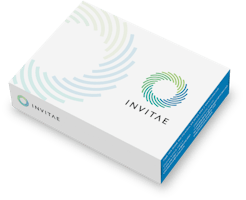
Invitae Cerebrotendinous Xanthomatosis Test
Test code: 06161 •
Test description
The Invitae Cerebrotendinous Xanthomatosis Test analyzes the CYP27A1. Pathogenic variants in CYP27A1 lead to cerebrotendinous xanthomatosis (CTX), which is caused by a deficiency of a mitochondrial enzyme involved in cholesterol metabolism.
This test is indicated for any individual in whom cerebrotendinous xanthomatosis is suspected based on clinical or laboratory findings. Genetic testing of this gene may confirm a diagnosis and help guide management decisions. Identification of disease-causing variants provide accurate risk assessment and carrier status for at-risk relatives.
Ordering information
Turnaround time:
10–21 calendar days (14 days on average)New York approved:
YesPreferred specimen:
3mL whole blood in a purple-top EDTA tube (K2EDTA or K3EDTA)Alternate specimens:
Saliva, buccal swab, and gDNA are also accepted.Learn more about specimen requirementsRequest a specimen collection kitClinical description and sensitivity
Clinical description:
Cerebrotendinous xanthomatosis (CTX) is a lipid-storage disease characterized by infant/childhood-onset diarrhea and bilateral cataracts, which are followed by the onset of tendon xanthomas and progressive neurological abnormalities. Neurological symptoms usually begin in adolescence or young adulthood and include pyramidal symptoms, cerebellar ataxia, and, less commonly, psychiatric issues, epilepsy or peripheral neuropathy. Some affected individuals have systemic spinal cord involvement, premature atherosclerosis and other ophthalmological abnormalities including paleness of the optic disk. Cholesterol and cholestanol deposits are found in the vast majority of tissue types.
Adequate early diagnosis and replacement therapy with chenodeoxycholic acid may prevent clinical deterioration.
The biochemical abnormalities that distinguish CTX from other conditions with xanthomas include high plasma and tissue cholestanol concentration, normal-to-low plasma cholesterol concentration, decreased chenodeoxycholic acid, increased concentration of bile alcohols and their glycoconjugates, and increased concentrations of cholestanol and apolipoprotein B in cerebrospinal fluid.
Assay information
Invitae is a College of American Pathologists (CAP)-accredited and Clinical Laboratory Improvement Amendments (CLIA)-certified clinical diagnostic laboratory performing full-gene sequencing and deletion/duplication analysis using next-generation sequencing technology (NGS).
Our sequence analysis covers clinically important regions of each gene, including coding exons and 10 to 20 base pairs of adjacent intronic sequence on either side of the coding exons in the transcript listed below, depending on the specific gene or test. In addition, the analysis covers select non-coding variants. Any variants that fall outside these regions are not analyzed. Any limitations in the analysis of these genes will be listed on the report. Contact client services with any questions.
Based on validation study results, this assay achieves >99% analytical sensitivity and specificity for single nucleotide variants, insertions and deletions <15bp in length, and exon-level deletions and duplications. Invitae's methods also detect insertions and deletions larger than 15bp but smaller than a full exon but sensitivity for these may be marginally reduced. Invitae’s deletion/duplication analysis determines copy number at a single exon resolution at virtually all targeted exons. However, in rare situations, single-exon copy number events may not be analyzed due to inherent sequence properties or isolated reduction in data quality. Certain types of variants, such as structural rearrangements (e.g. inversions, gene conversion events, translocations, etc.) or variants embedded in sequence with complex architecture (e.g. short tandem repeats or segmental duplications), may not be detected. Additionally, it may not be possible to fully resolve certain details about variants, such as mosaicism, phasing, or mapping ambiguity. Unless explicitly guaranteed, sequence changes in the promoter, non-coding exons, and other non-coding regions are not covered by this assay. Please consult the test definition on our website for details regarding regions or types of variants that are covered or excluded for this test. This report reflects the analysis of an extracted genomic DNA sample. In very rare cases, (circulating hematolymphoid neoplasm, bone marrow transplant, recent blood transfusion) the analyzed DNA may not represent the patient's constitutional genome.
You can customize this test by clicking genes to remove them.
Primary panel
Xanthomas are also part of the clinical presentation for sitosterolemia, depending on the clinical presentation of the patient, clinicians may wish to broaden analysis by including ABCG5 and ABCG8. These genes can be added at no additional charge.
Question about billing?
Find answers